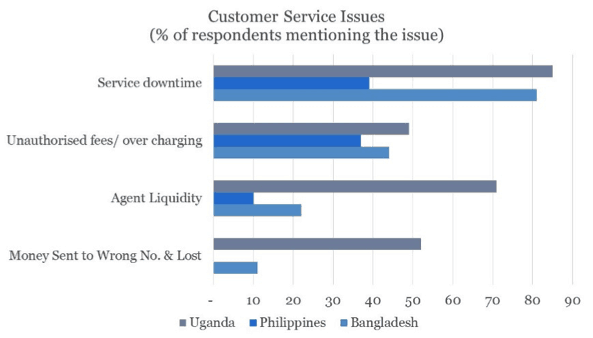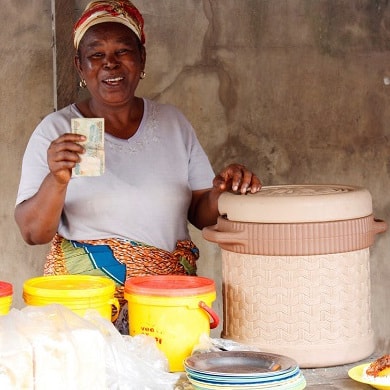Digital Government: 4 Keys to Kenya’s Success with Electronic Government Payments
Kenya has long been grappling with inefficiencies in government service delivery, characterized by resource constraints, bureaucratic processes and lack of accountability. In response, the government launched an integrated service model for person-to-government (P2G) and business-to-government (B2G) payments in July 2014. At the county level, residents and businesses can pay for council parking, rental properties, business permits, land rates and construction permits. At the national level, citizens, foreign residents, visitors and local business owners can apply and pay for 41 services from various public sector departments, including immigration, civil and business registration, through the “eCitizen” online platform. To date, over 1.23 million citizens have registered, and in 2015, the government collected $227,000 from payments made through the portal.
Services are accessible by registering on an online portal or via USSD on a mobile device using the existing Paybill transaction type. Payment technologies available include mobile money, cards and PayPal. Other services available on separate platforms include M-Service, a web portal for filing and making payments for domestic taxes, customs and vehicle logbook fees, and M-AKIBA, the highly anticipated $5 million infrastructure bond that will soon be issued and traded exclusively via mobile money.
These new digital services aim to streamline complex processes, saving the public time – and saving the government money. Previous experiences at the local level give cause for optimism. For instance, a study carried out by Accenture, on digitizing government payments in Kenya found that in 2012, the Nairobi County Council spent 60 percent ($264,000) of its parking fee collections on administration costs. In 2014, after digitizing collections, the county reported a 14 percent ($14 million) increase in total revenues. Over 85 percent of payments for parking fees, single business permits and licenses are now made via mobile money. Challenges such as issuance of fake documents and receipts have been eliminated as individuals and businesses can conveniently access legitimate channels.
Key contributors to the successful digitization of government payments
In many ways, Kenya is ideally suited to digitize its government functions. Consider the following:
Mature Mobile Money Ecosystem: According to the World Bank’s Global Findex report, 58 percent of the adult population in Kenya had active mobile money accounts in 2014, the highest rate in the world. The Central Bank of Kenya reported 31 million mobile money subscribers backed by close to 144,000 agents in 2015. Usage extends beyond person-to-person transfers to include airtime purchase, credit, insurance, savings products, bill, bulk and merchant payments.
In contrast, payment card usage is generally low in Kenya, especially for online transactions: 95 percent of debit cards are used solely at Automated Teller Machines, while credit card usage is at 4 percent. That’s one reason previous efforts to digitize the public transport system by introducing “My1963” and “BebaPay” cards were unsuccessful. Given the low values of public transport costs and poor uptake of card-based products, these services could not adequately compete with cash. But owing to its pervasiveness, mobile money – though largely dominated by the M-PESA service – can avoid similar pitfalls, becoming a critical enabler in the digitization of government service payments in Kenya.
Supporting Infrastructure (Huduma Centers): “Huduma” means “service” in Swahili, and Huduma Centers are one-stop shops set up countrywide by the government to complement the eCitizen portal by providing additional services and those requiring physical presence or special assistance. The 47 Huduma Centers are comprised mainly of upgraded post office outlets in each county, with mobile units serving extremely remote areas. On average, 12,000 people are served daily at Huduma Centers, and as of June 2015, payments for services rendered totaled $50 million.
Internet Access and Usage: According to the Internet live stats, Kenya’s internet penetration rate is 45 percent of the population (21.2 million), after Nigeria, South Africa and Seychelles. Mobile technology and the increase in smartphone ownership have played key roles in improving access. Affordable and accessible Internet enables quicker government service delivery especially for services such as driving license renewal or land rent payments, which can be initiated and completed online.
Enabling Legal and Regulatory Environment: The Central Bank of Kenya passed regulation governing the digitization of government services and payment platforms in December 2014. This is in addition to existing local and international laws and policy frameworks aimed at promoting a safe, efficient and transparent digital payment ecosystem.
Impact on the Payments Ecosystem
According to the World Bank’s General Guidelines for the Development of Government Payment Programs (2012), leveraging the essentiality of government services, volume of payments, and access to mobile money can drive financial inclusion by providing an entry point into formal financial services for previously excluded segments. Arguably, in markets with low mobile money adoption, government payments can significantly drive uptake if other major contributors are well-aligned. For example, Thailand’s government policy to promote national electronic payments targets over 30 million people who have never used mobile money, and aims to increase mobile payment volumes by 1,000 percent by the end of 2016. Though Kenya’s market is more developed, it can expect its digitization policy to boost financial access among communities that remain underserved.
By enabling improved access to business services, the Kenyan government also intends to provide incentives for informal enterprises to register and acquire licenses for their operations. This move presents opportunities for improved skill development and access to credit for entrepreneurs, offers better protection for consumers, and enhances the government’s ability to monitor standards and levy taxes effectively. The Government E-payments Adoption Ranking (GEAR) 2011 documents the positive impact of digitizing government service payments on integration of the informal economy.
Digitizing government payments – including the noteworthy role of mobile money – can have far reaching effects in accelerating the development of an inclusive digital payments ecosystem. It can ease service delivery to residents, provide additional revenue streams for service providers, enhance accountability, and safeguard government revenue collections. The longer-term success of Kenya’s digitization initiative depends on the government’s concerted efforts to ensure systems security and stability, sustained awareness campaigns, continuous improvements to the user experience, and synergy through partnerships with the private sector and multilateral development organizations.
Photo: A screenshot of Kenya’s eCitizen portal.
Judyth Oduor-Engels is a digital financial services consultant with 10 years’ experience in mobile financial services and remittances.
- Categories
- Uncategorized



